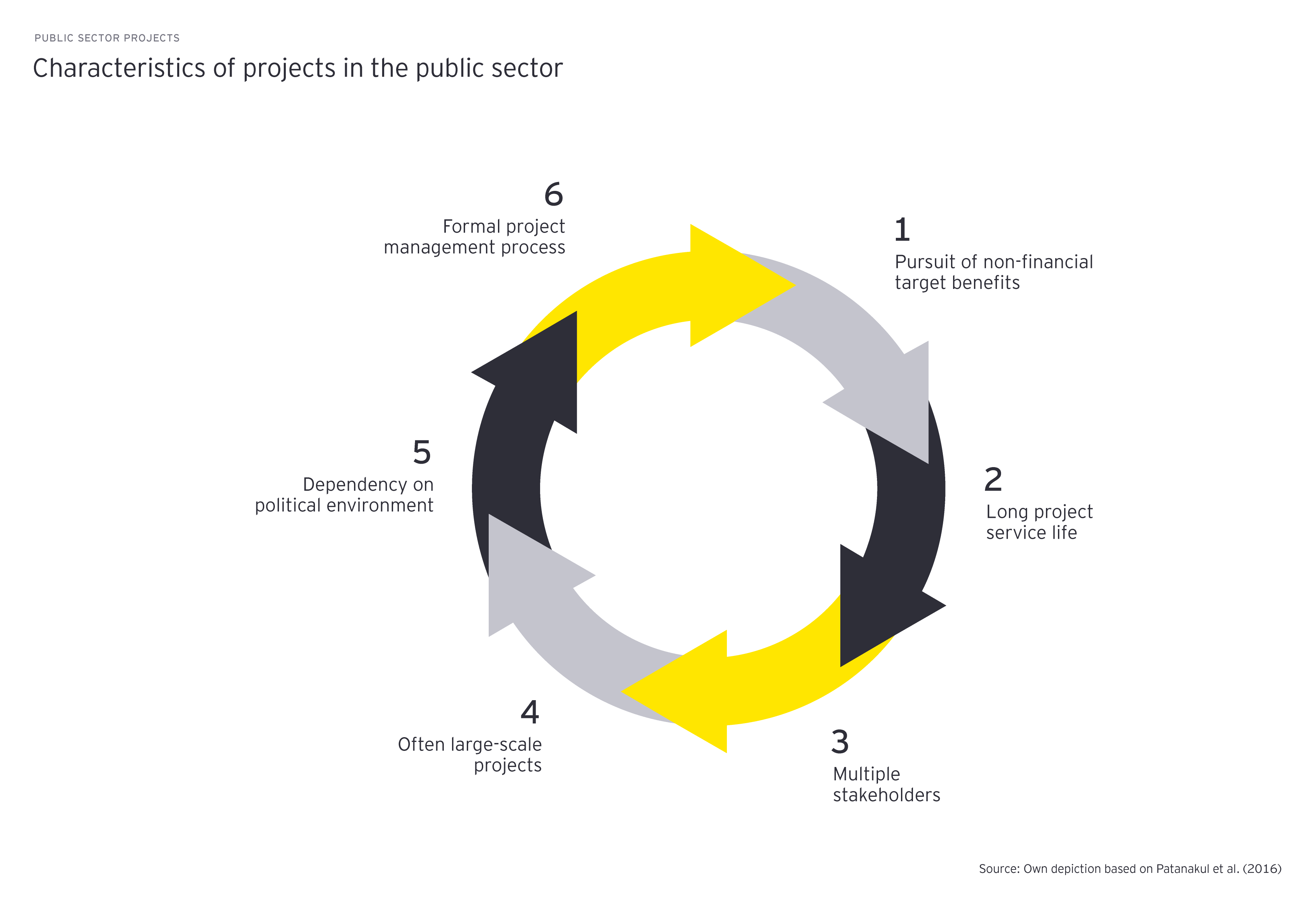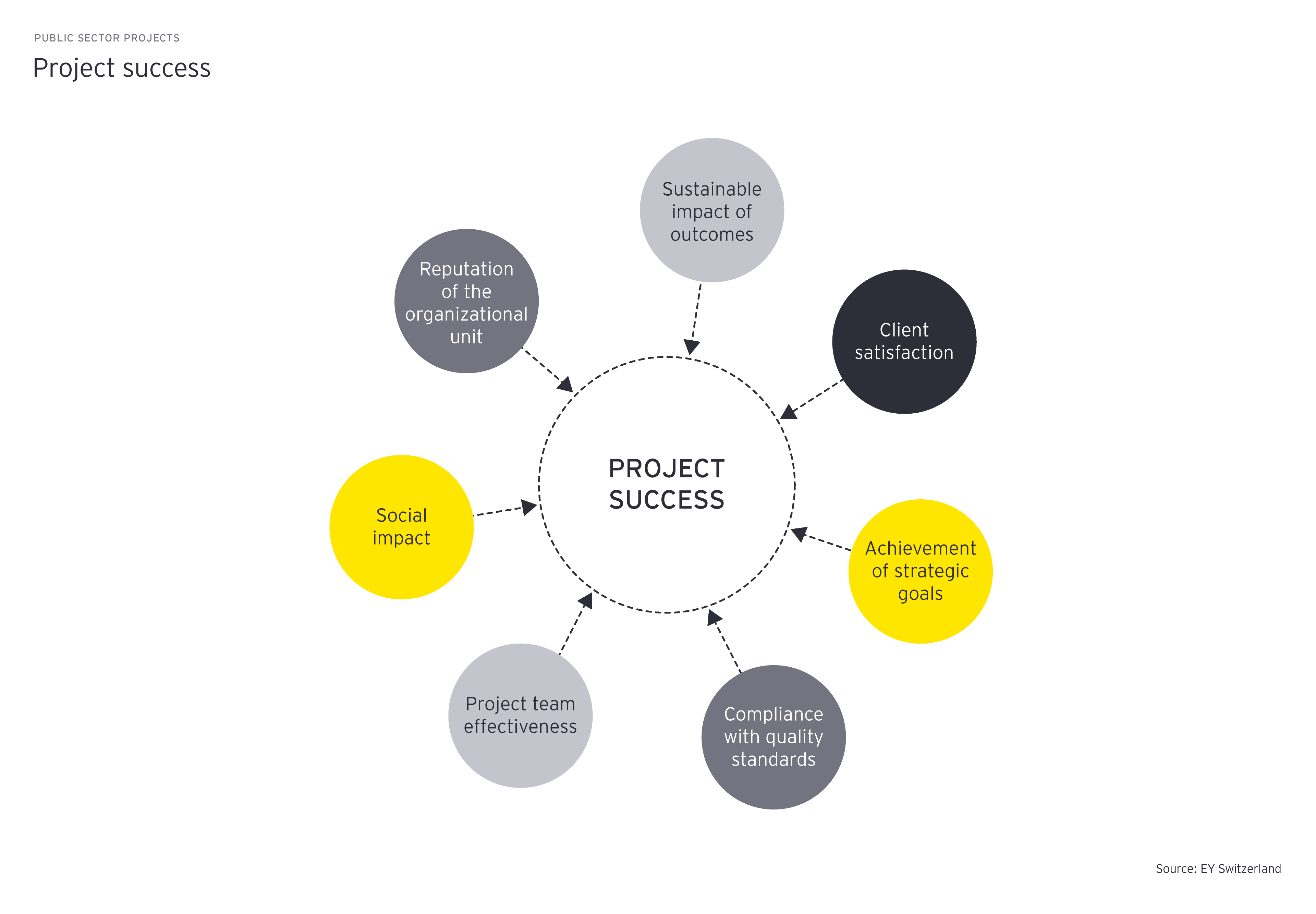EY refers to the global organization, and may refer to one or more, of the member firms of Ernst & Young Limited, each of which is a separate legal entity. Ernst & Young Limited is a Swiss company with registered seats in Switzerland providing services to clients in Switzerland.

We share highlights from EY’s GPS whitepaper on public sector projects – focusing on features, challenges and success factors.
In brief
- What are the key challenges facing public sector projects?
- How does the public sector define project success?
- Where should project managers focus to ensure positive outcomes?
Megatrends – such as demographic and social developments, rapid urbanization, shifting global economic powers, climate change and technological breakthroughs – make change essential. The public administration sector is not exempt from these forces and must invest continuously in projects and initiatives to stay up to date and relevant for all stakeholders.
To succeed, public sector projects must make the right use of resources, apply sound and realistic planning, and ensure good management. Large-scale transformation projects are usually time-consuming and costly. Made cautious by past experience, the public now exerts permanent pressure for resources to be used efficiently – and demonstrably so. Against this background, it’s important to understand the features of public sector projects, the challenges they face and the definitions of successful outcomes. This article focuses on these aspects based on a recent whitepaper released by EY.
Download the whitepaper to read our information in full:
Features and challenges of public sector projects
Public sector projects are the responsibility of state or state-affiliated institutions and are largely financed with public funds. They serve the interests of the general public and contribute to improving public infrastructure and public services. The public sector is under pressure to provide modern, innovative and efficient products as well as solutions for its services. In addition, it must also respond to and incorporate political discourse in its decision-making.

Public sector projects encompass a variety of features which are different to those of the private sector. The following principles are typical:
- The focus is less on financial goals than in the private sector
- The project is designed to have a long life
- There are links and cooperation with different stakeholder groups
- The projects are often large-scale
- They depend on the political discourse and the political environment
- There is a defined project management process
Another commonly observed feature of public sector projects is that they are under intense pressure to be executed efficiently, deliver visible and sustainable results and benefit the public. It is not uncommon for the media to pick up on projects that fall behind schedule or fail to produce the desired outcome. Frequent points of criticism include non-adherence to schedules and budgets as well as the waste of taxpayers’ money. Well-known examples from the German-speaking “DACH” region include the construction of the Elbe Philharmonic Hall in Hamburg and Berlin Brandenburg Airport. In both cases, a combined lack of risk management, optimism bias and incomplete planning led not only to a drastic extension of the project duration, but also budget overruns that required political justification. But Switzerland also has examples of suboptimal project planning that have been covered in the media. For years, the Swiss federal railway company, SBB, has had to justify issues related to the purchase of Bombardier trains and address the consequences of this decision.
Digitalization projects also regularly come under scrutiny even if the project is at an advanced stage of completion. An example here is the BLS project to replace the “RailOpt” software, which was launched in 2016. Three years into the project, the planned software changes were found to be too costly. In 2019, the project had to be written off with an impairment loss of more than 20 million Swiss francs. The federal government also faces challenges in the area of digitalization and transformation. These topics often attract media attention, which in turn influences the social consensus regarding efficiency and use of taxpayers’ money in the public sector. Many high-profile public sector projects have failed not only because of challenges already familiar from the private sector, but because they have come under additional public pressure.
Defining project success

While project failures are usually easy to identify, definitions of success span a variety of factors. Most definitions cover the components of time, cost and performance. Other metrics have been added across multiple business areas. The International Project Management Association (IPMA) defines project success as “the ability to deliver the project’s product in scope, time, cost and quality”. The PMBOK Guide addresses the importance of objectives, time, cost and performance to the success of a project.
Additionally, the Project Management Institute (PMI) defines project success as a complex construct made up of a number of factors. PMI goes beyond simple definitions and emphasizes that other factors must be considered for project success:
Lead your project to success
We have identified six ways to help you make your project a success:
- Engage in transparent and regular communication
- Tackle fewer projects but focus on the right ones
- Take a holistic view
- Apply appropriate project management methods
- Set clear project objectives
- Involve the client closely
It is important to note that each project is unique and it may be necessary to add additional steps or adjust your focus to achieve the best possible outcome. Download the whitepaper to read EY’s detailed recommendations for successful outcomes and learn how agile approaches can support the project process.
Summary
The pressures and challenges associated with public sector projects differ in various ways compared to the private sector. Understanding the unique features is the first step securing successful outcomes that benefit all stakeholders.
Acknowledgements
We thank David Zeller, Johannes Scholz and Natasa Stevanovic for their valuable contribution to this article.



